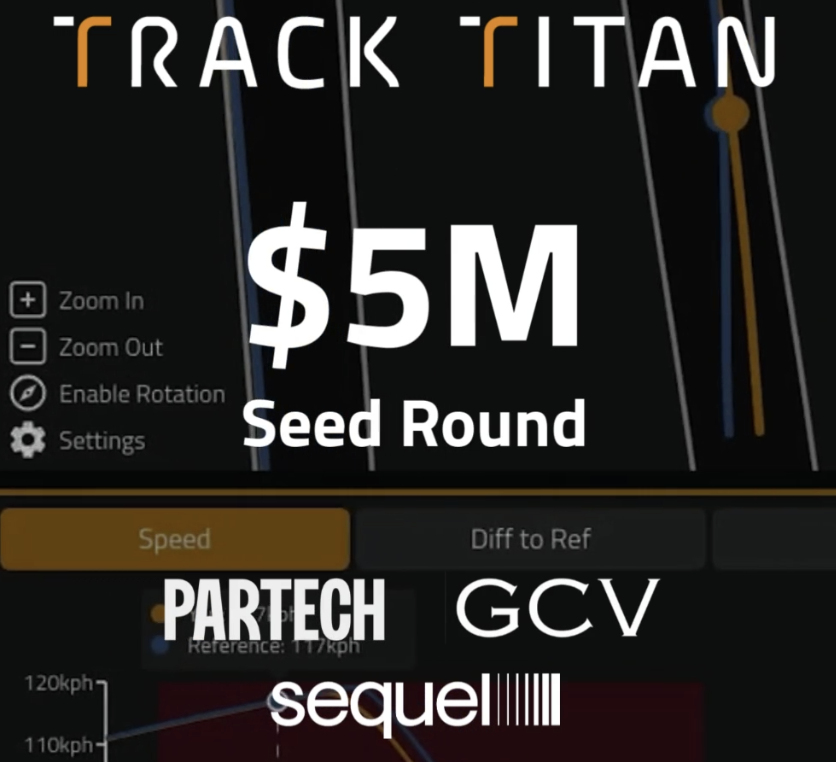Dallara DW12 Tsukuba Hot Lap Analysis
Let’s delve into the telemetry from a hot lap around Tsukuba in the Dallara DW12 driven by HYMO.
Analysis

Charlie from the Hymo team demonstrates superior cornering techniques that contribute to faster lap times. By carrying more speed from the exit of the previous corner, Charlie gains an initial advantage that allows for a more optimal racing line. He reaches his minimum speed earlier in the corner, enabling him to accelerate sooner and achieve a higher exit speed with a steeper increase. This is indicative of effective throttle application and maximises time gains on corner exit.
His braking technique is also more effective; Charlie applies brake pressure rapidly and maintains it consistently, allowing him to carry more speed into corners. This minimises deceleration time, maintaining momentum, and improving lap times. In contrast, the other driver's gradual brake pressure application results in slower entry speeds and less efficient cornering.
Charlie's smooth and progressive throttle control showcases precision in power application, maintaining momentum, and minimising wheel spin. His linear throttle application maximises grip levels through corners, leading to higher speeds onto straights. The other driver's erratic throttle input causes handling instability and time loss through corners.In summary, Charlie's initial speed advantage, early minimum speed achievement, effective braking technique, and smooth throttle control are key factors in his faster lap times for the Hymo team. The other driver could benefit from adopting these techniques to improve their performance on track.

Upon analysing the speed chart, it is evident that Charlie from the Hymo team maintains a higher speed at the very start of the corner compared to the other driver. This indicates that Charlie has carried more speed from the exit of the previous corner, which is a critical factor in achieving a faster lap time. The initial speed advantage sets up Charlie for a more efficient cornering sequence, as he can potentially take a more optimal line through the corner due to having greater momentum. As we progress through the corner, it's clear that Charlie reaches his minimum speed earlier than the other driver. This is crucial because it allows him to get back on the throttle sooner, facilitating earlier acceleration out of the corner. The data shows that not only does Charlie achieve a higher exit speed, but also his speed increases at a steeper gradient compared to his competitor. This demonstrates effective throttle application and confirms that his earlier minimum speed leads to significant time gains on corner exit. It's this combination of carrying initial momentum and maximising acceleration out of corners that contributes substantially to Charlie's overall lap time advantage.

Charlie's braking technique is clearly more effective, as indicated by the data. His rapid application of the brake pedal and the higher initial brake pressure allows him to carry more speed into the corners, contributing to a better lap time. The other driver's gradual increase in brake pressure suggests a more cautious approach, which ultimately results in a slower entry speed and a less efficient racing line through the corner. The key takeaway here is that Charlie's ability to hit peak braking force quickly and maintain it consistently before tapering off as needed for the turn shows a high level of skill and car control. This technique minimises time spent decelerating, which is crucial for maintaining momentum and achieving faster lap times. The other driver would benefit from practicing this aggressive yet controlled braking method to improve their overall performance on track.

Charlie's throttle control is consistently smoother and more progressive compared to the other driver. This indicates a higher level of precision in applying power, which helps in maintaining momentum and minimising wheel spin. The chart shows that Charlie applies throttle in a linear fashion, which suggests he is maximising the grip levels of the car through the corners. This technique contributes to his ability to carry more speed onto the straights, ultimately leading to faster lap times. The other driver, on the other hand, shows a more erratic throttle application with sharper peaks and troughs. This can lead to instability in the car's handling and result in time lost through corners due to unnecessary adjustments. By adopting a smoother throttle input similar to Charlie's, this driver could improve their corner exit speeds and see a reduction in lap times. It's clear that Charlie's methodical approach to throttle control is a key factor in his performance for the Hymo team.
To see full lap analysis of your own driving, you can sign up to Track Titan for FREE today here.




.png)





















